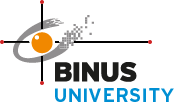COMPUTER NETWORKS (3 SCU)
Learning Outcomes:
Upon successful completion of this course, students are expected to explain key networking concepts, principles, design issues and techniques at all protocol layers; apply layered communication architectures (OSI and TCP/IP); describe the Internet architecture, relevant features of TCP/IP protocols, and unique characteristics of Ethernet and Wireless LANs; understand the importance of cryptography has increased over time to become a key defense in securing data from threat actors identify computer networks vulnerabilities and how to secure the computer network; demonstrate how to protect a network through network devices, architecture, and technologies; and examine how to assess the vulnerability of an enterprise and how to practice data privacy security.
Topics:
This course introduces the architecture, structure, functions, components, and models of the Internet and other computer networks. It uses the OSI and TCP layered models to examine the nature and roles of protocols and services at the application, network, data link, and physical layers. The principles and structure of IP addressing, and the fundamentals of Ethernet concepts, media, and operations are introduced to provide a foundation for the curriculum. The packet tracer and Wireshark will be used to allow students to analyze real data without affecting production networks. Packet Tracer (PT) activities help students analyze protocol and network operation and build small networks in a simulated environment. At the end of the course, students build simple LAN topologies by applying basic principles of cabling; performing basic configurations of network devices, including routers and switches; and implementing IP addressing schemes. After mid-term, the students are introduced basic topic of security and cryptography.
Prerequisite(s): None



SOCIAL MEDIA
Let’s relentlessly connected and get caught up each other.
Looking for tweets ...